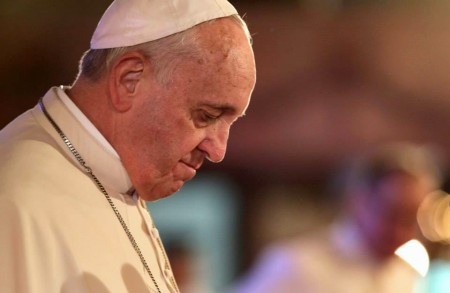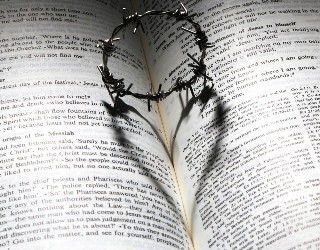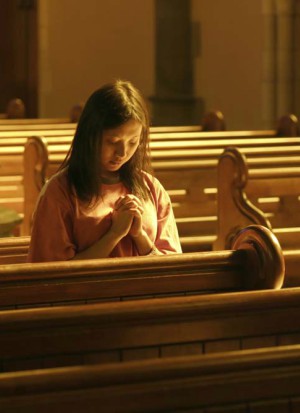 Hi readers, it seems you use Catholic Online a lot; that's great! It's a little awkward to ask, but we need your help. If you have already donated, we sincerely thank you. We're not salespeople, but we depend on donations averaging $14.76 and fewer than 1% of readers give. If you donate just $5.00, the price of your coffee, Catholic Online School could keep thriving. Thank you. Help Now >
Hi readers, it seems you use Catholic Online a lot; that's great! It's a little awkward to ask, but we need your help. If you have already donated, we sincerely thank you. We're not salespeople, but we depend on donations averaging $14.76 and fewer than 1% of readers give. If you donate just $5.00, the price of your coffee, Catholic Online School could keep thriving. Thank you. Help Now >
Ceremony
FREE Catholic Classes
(Sanskrit, karman , action, work; from kar or ker , to make or create; Latin cœremonia )
Ceremony in liturgy, an external action, gesture, or movement which accompanies the prayers and public exercise of divine worship. To these the Council of Trent (Sess. XXII, cap. v.) adds the things over which or with which the prayers are pronounced, e.g. blessings, lights, incense, vestments, etc. Ceremony is the necessary outcome of the twofold nature of man, intellectual and sensible, on account of which, as St. Thomas Aquinas says (Contra Gentiles, III, cxix), he must pay God a twofold adoration, one spiritual, which consists in the interior devotion of the soul, the other corporal, which manifests itself in the outward form of worship, for there is no inward sentiment or feeling which man is not wont to express outwardly by some suitable gesture or action. Ceremonies are employed to embellish and adorn sacred functions; to excite in the faithful sentiments of respect, devotion, and religion, by which the honour of God is increased and the sanctification of the soul is obtained, since these constitute the principal object of all liturgical acts; to lead the illiterate more easily to a knowledge of the mysteries of religion; to indicate the dispositions necessary to receive the sacraments worthily; and to induce the faithful to fulfil with greater docility the obligations which the reception of the sacraments imposes on them.
 Hi readers, it seems you use Catholic Online a lot; that's great! It's a little awkward to ask, but we need your help. If you have already donated, we sincerely thank you. We're not salespeople, but we depend on donations averaging $14.76 and fewer than 1% of readers give. If you donate just $5.00, the price of your coffee, Catholic Online School could keep thriving. Thank you. Help Now >
Hi readers, it seems you use Catholic Online a lot; that's great! It's a little awkward to ask, but we need your help. If you have already donated, we sincerely thank you. We're not salespeople, but we depend on donations averaging $14.76 and fewer than 1% of readers give. If you donate just $5.00, the price of your coffee, Catholic Online School could keep thriving. Thank you. Help Now >
Some ceremonies owe their institution to purely physical reasons or necessity, e.g. the lights used in the catacombs, which were retained by the Church for the mystical reason that they represent Christ, the Light of the World; others are founded on mystical or symbolical reasons, e.g. all the ceremonies at baptism which precede the pouring of the water on the person to be baptized ; many are founded on historical, natural, and mystical reasons at the same time, e.g. the mixing of wine and water at Mass recalls to our mind what Christ did at the Last Supper, and represents the blood and water that flowed from His side on the Cross as well as the union of the faithful with Christ. Catholic ceremonies, therefore, are not superstitious practices, meaningless observances or relics of heathen and Jewish customs, but regulations of Divine, Apostolic, and ecclesiastical institution. They may be grouped, according to Francisco Suárez (De Sacramentis, Disp. lxxxiv) into three classes:
- (a) Some invest a function with decorum, dignity, and reverence, e.g. washing the hands, striking the breast, approaching the altar with downcast eyes.
- (b) Others serve as external acts of worship, e.g. bending the knee, bowing the head.
- (c) Many are prescribed for a moral and mystical signification, e.g. elevating the bread and wine at the Offertory of the Mass, raising the hands and eyes, giving the kiss of peace, frequently making the sign of the cross .
To these may be added another class which not only symbolize, but produce, spiritual effects, and obtain Divine grace, e.g. the imposition of the hands of the bishop together with the form of words by which priestly power and inward grace are conferred on the recipient of Holy orders. The sum total of the ceremonies of an individual function is called a rite ( ritus ), e.g. the rite of Mass, baptism, extreme unction ; the totality of the rites of religion is called its cult ( cultus ). (See RITE).








 Daily Readings for Friday, April 19, 2024
Daily Readings for Friday, April 19, 2024 St. Alphege: Saint of the Day for Friday, April 19, 2024
St. Alphege: Saint of the Day for Friday, April 19, 2024 Stewardship Prayer: Prayer of the Day for Friday, April 19, 2024
Stewardship Prayer: Prayer of the Day for Friday, April 19, 2024
